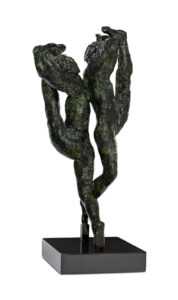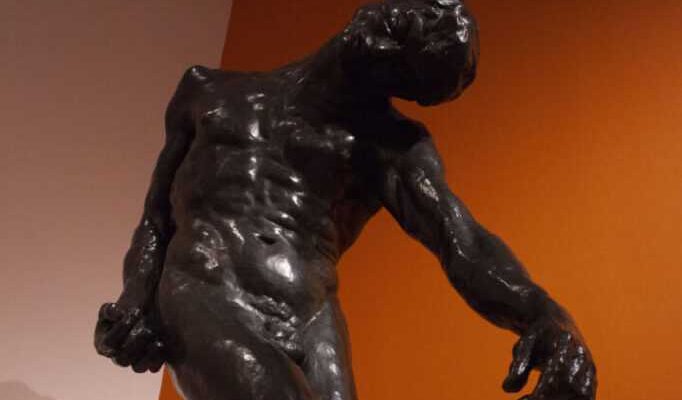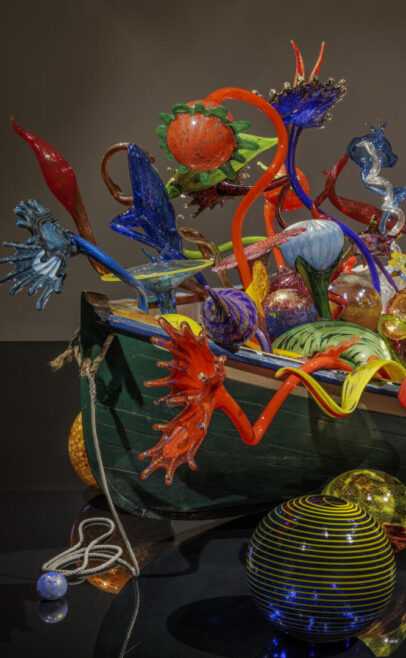By Michael Anderson, Ph.D, President and CEO
“And yet Rodin does belong to us… because in him, for the first time, we see firm flesh resolve itself into a symbol of perpetual flux. Rodin’s anatomy is not the fixed law of each human body but the fugitive configuration of a moment.” -Leo Steinberg, Art Historian1
The sculpture of Auguste Rodin (1840-1971) occupies a truly unique position in the history of Western art: since the Renaissance, no single artist so completely dominates the narrative of their chosen medium in their lifetime as Rodin does his (at least from our perspective today). For a similar contribution, we might need to look to dramaturgy in Shakespeare’s lifetime or painting in Giotto’s two hundred years before. Or perhaps to sculpture again in Michelangelo’s day, which is to say to the work of the genius whose legacy Rodin was most eager to claim three hundred years later.
However, it is not as the inheritor to Michelangelo—as the Italian master was the successor to the greatest of the Greeks—that we find Rodin’s work most invigorating, but rather as the sculptor who, as a reflection of the century into which he was born, introduced a new set of possibilities that changed the course of modern sculpture.
Steinberg’s assessment in the opening quote suggests a constellation of new understandings and experiences that were fresh in Rodin’s time and remain relevant today. First, there was the nineteenth century’s discovery of the atom through which we were taught that all matter was comprised of smaller component parts, a basic precondition to our understanding that the world was not as we immediately sensed it, but that it was far more dynamic. Second, there was Darwin’s publication of On the Origin of Species, a half century later—a founding text of evolutionary biology that again highlighted a changing rather than a static world.
Outside biological science, the nineteenth century brought the invention of photography and later moving images, which were mechanical reproductions of the world that helped to atomize and explain time (and especially movement) in new and compelling ways. They were arts that belonged to the modern world precisely as they allowed for the mass production that defined the century’s industrial advances.
All of these factors created Steinberg’s Rodin, an artist who no longer limited himself to the idea that sculpture was the art of one body reproduced in one block of marble or bronze casting. Rather he was The Shade (first modelled in 1880), repeated from three separate vantages at the top of the Gates of Hell, or the Pas de deux “G” (ca. 1910-13), a smaller, tabletop work featured in the exhibition’s “The Figure in Motion” section that shows the same body at two different stages or moments of a single gesture. In both, we have preconditions for twentieth– century sculpture where we are no longer looking at one body in space, necessarily, but rather Constantin Brâncuși’s translation of a flight path (Bird in Space) or Donald Judd’s iterative wall of identical iron boxes. Rodin points the way to both, and as such to a radically different art of sculpture.

Back to biology, there is Rodin’s constant urge to reassemble, to build his sculptures and new bodies from the fragments of existing figures—as he would for his Female Centaur (ca. 1887-89) among a number of examples that appear in the exhibition. In this and other works, we see Rodin constantly tinkering with the world of forms he has created, breaking them apart (in their plaster forms) and putting them back together to create new meanings. His art is that of montage, of multiple pieces assembled to create a new meaning, which was one of the characteristics that would define the new art of cinema that his sculpture paralleled.
Rodin was the gate through which modern sculpture would enter. He did look back to Michelangelo and the Renaissance, creating an art that expressed itself in bodies—or sometimes parts of bodies (as with his hand fragments). In The Gates of Hell, he was possessed by the same serious moral purpose as Michelangelo, but the forms he would use to express these ideas belonged to his own less religious—more relativistic—age. His bodies were no longer unified wholes like the Renaissance master’s, stable truths existing in the world, but were instead men and women in constant motion, subject to transformation and even, as with his Shade and Pas de deux “G,” replication.
1 Leo Steinberg, Other Criteria: Confrontations with Twentieth-Century Art (New York: Oxford University Press, 1972), p. 325.









